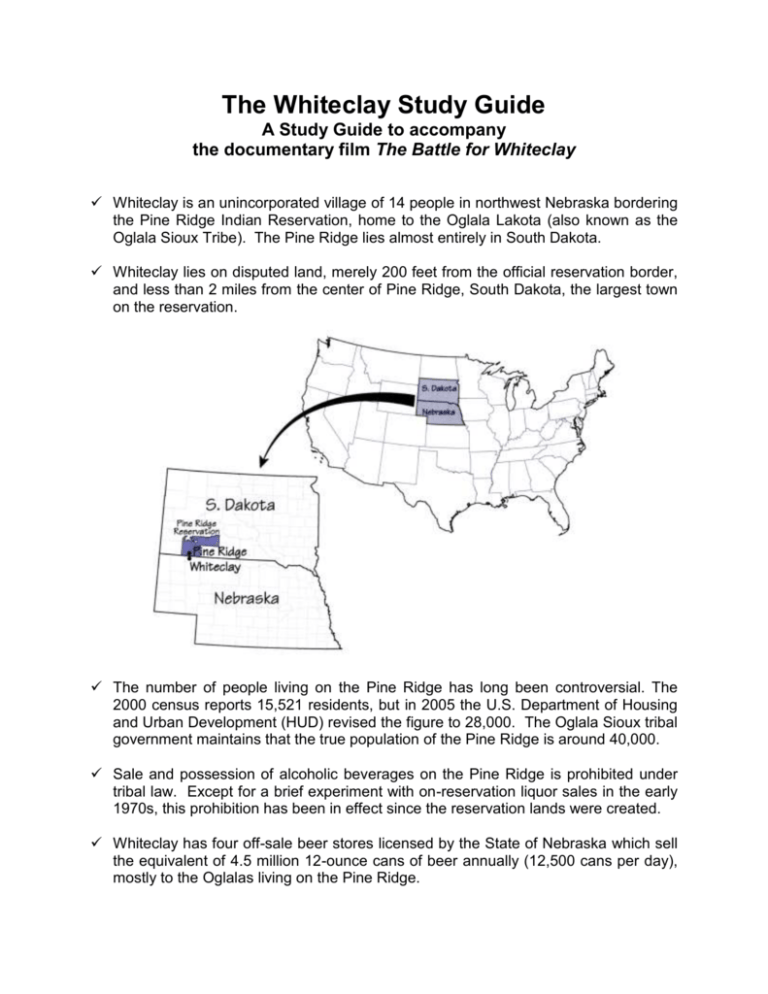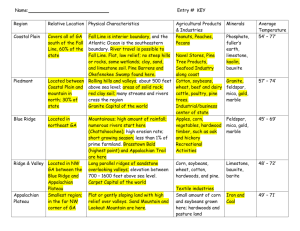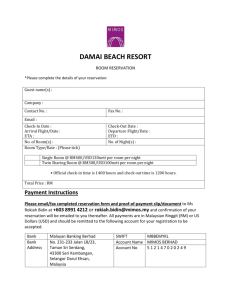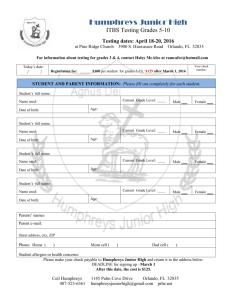The Battle for Whiteclay – A Study Guide
advertisement

The Whiteclay Study Guide A Study Guide to accompany the documentary film The Battle for Whiteclay Whiteclay is an unincorporated village of 14 people in northwest Nebraska bordering the Pine Ridge Indian Reservation, home to the Oglala Lakota (also known as the Oglala Sioux Tribe). The Pine Ridge lies almost entirely in South Dakota. Whiteclay lies on disputed land, merely 200 feet from the official reservation border, and less than 2 miles from the center of Pine Ridge, South Dakota, the largest town on the reservation. The number of people living on the Pine Ridge has long been controversial. The 2000 census reports 15,521 residents, but in 2005 the U.S. Department of Housing and Urban Development (HUD) revised the figure to 28,000. The Oglala Sioux tribal government maintains that the true population of the Pine Ridge is around 40,000. Sale and possession of alcoholic beverages on the Pine Ridge is prohibited under tribal law. Except for a brief experiment with on-reservation liquor sales in the early 1970s, this prohibition has been in effect since the reservation lands were created. Whiteclay has four off-sale beer stores licensed by the State of Nebraska which sell the equivalent of 4.5 million 12-ounce cans of beer annually (12,500 cans per day), mostly to the Oglalas living on the Pine Ridge. 2 Brief history of Whiteclay In 1882 U.S. President Chester A. Arthur decreed a fifty-square-mile buffer zone in Nebraska south of and adjacent to the Pine Ridge Reservation in South Dakota at the urging of the U.S. Indian Agent and Oglala Lakota elders, for the protection of reservation residents from illegal whiskey peddlers operating in this area. In 1889, and again in 1890, the U.S. Congress enacted legislation incorporating this buffer zone, known as the White Clay Extension, into the boundaries of the reservation. This land was designated by Congress to remain a part of the reservation until such time as its protective function is no longer needed. In 1904 President Theodore Roosevelt by executive order placed 49 of the 50 square miles of the White Clay Extension into the public domain, precipitating a land grab by white settlers, without representing that the original need for the buffer zone had ceased to exist. These acts were carried out over protests by Oglala Lakota elders, the Indian Agent and other concerned white residents of the area that the need indeed remained. Illegal sales of alcohol to Pine Ridge residents continued until the mid-1950s through unlicensed commercial establishments (bootleggers) operating in the unincorporated village of Whiteclay, Nebraska, which lies on the White Clay Extension at the border of the reservation and within easy walking distance of the reservation’s largest town. In the mid-1950s the State of Nebraska licensed two bars in Whiteclay to permit on-sale consumption of alcohol. The bars became notorious for the violence which occurred on their premises. In the early 1970s the owners converted their licenses to off-sale beer only. Officials quickly added two additional off-sale beer licenses in Whiteclay. Since the early 1970s the State of Nebraska has licensed four off-sale beer retailers in Whiteclay. These retailers routinely violate Nebraska liquor law by selling beer to minors and intoxicated persons, knowingly selling to bootleggers who resell the beer on the reservation, permitting on-premise consumption of beer in violation of restrictions placed on off-sale-only licenses, and exchanging beer for sexual favors. The vast majority of those who purchase beer in Whiteclay have in fact no legal place to consume it, since possession and consumption of alcoholic beverages on the Pine Ridge Reservation remain illegal under tribal law. For more information contact the authors of this Study Guide: Jeff Mohr, M.S.W. Associate Professor of Social Work Nebraska Wesleyan University 402-465-2425 jmohr@nebrwesleyan.edu Mark Vasina Producer/Director of TBFW 402-890-6958 mvasina@neb.rr.com 3 Questions for discussion (after viewing the film) 1. How does the concept of “personal responsibility” factor into alcohol sales in Whiteclay? How can this concept guide or affect judgments about what can be done to improve conditions in Whiteclay and on the Pine Ridge Reservation? 2. What role does “social responsibility” play in the sale of alcoholic beverages? How do communities use public policy to control the supply and use of alcohol? Why do we have laws regulating the sale and consumption of alcoholic beverages in American society? What steps have been taken by Native peoples on their reservations to deal will the problems of alcohol abuse? 3. What are the illegal activities involving alcohol allegedly occurring on a regular basis in Whiteclay that can be observed in the film? What might happen in your town or community if these activities were taking place there? 4. Many Native people have died in and around Whiteclay in recent years. In the film Native activist Frank LaMere suggests that if one white person were found dead in Whiteclay “… they’d shut the damn thing down! Think about the double standard.” Does this, as Mr. LaMere suggests, represent overt racism? 5. Frank LaMere states that many Native Americans consider racist the view that lawbreaking in Whiteclay should be tolerated in order to keep Nebraska roads and other communities safe. Who expresses this view in the film? What are the merits of this view? What are the merits of Mr. LaMere’s criticism of it? 6. The advice of journalists who investigate public scandals is: “Follow the money.” Can this advice aid us in understanding what is going on in Whiteclay and in the legislative battles to pass laws to deal with the situation? 7. Economic development on the Pine Ridge Reservation is difficult at best. What roles—either beneficial or detrimental—do border towns play in the economic health of reservations? How do border towns benefit from proximity to Indian reservations? 8. Where can one legally consume beer purchased in Whiteclay? Do you think the Nebraska Liquor Control Commission should address this situation when considering license applications and renewals in Whiteclay? Why do you think they have so far refused to do so? 9. When addressing the tribal council in 2003, Nebraska Governor Mike Johanns makes what may be considered the ‘official case’ for state government action//inaction regarding Whiteclay. What are his arguments? Are they compelling? Is his analogy with casino gambling sound? 4 10. Many critics of Whiteclay activism assert that Whiteclay alcohol merchants are legal enterprises and argue, “Even if Whiteclay disappears the Indians will go elsewhere to buy alcohol.” What are the strengths and weaknesses of these arguments? 11. In the film a Whiteclay beer store is charged with selling alcohol to an intoxicated person. A hearing at the Liquor Control Commission concludes with a ‘not guilty’ verdict. Evaluate the evidence presented by both the prosecution and the defense. What, if anything, does the outcome of this hearing suggest about the regulation of liquor licenses by the Commission? 12. The deputization agreement permitting tribal police officers from the Pine Ridge to enforce Nebraska laws in and around Whiteclay was controversial among the Oglalas. From their standpoint, what were the pros and cons of implementing it? Why do you think it was never implemented? 13. In the winter of 2005/06, the Oglala elders began calling for a blockade at the Whiteclay border to stop the illegal flow of alcohol onto the Pine Ridge. The film documents two blockade attempts—in June 2006 and June 2007—led by the Strong Heart Civil Rights Movement. All charges against those arrested at the 2007 blockade were eventually dismissed in tribal court. The second anniversary blockade in June 2008 was successfully carried out with the cooperation of the tribal police. What can the successes and failures of these attempts reveal about the concerns of the residents of the Pine Ridge? 14. Whiteclay lies on land known as the White Clay Extension (or ‘the buffer zone’) which was added to the Pine Ridge Reservation by federal legislation in 1889 to keep whiskey peddlers at a distance. It was removed in 1904 by an executive order of President Theodore Roosevelt. The legality of Roosevelt’s action has long been disputed—can a president revoke an act of Congress?—and the Oglalas have discussed lawsuits over this issue in recent years. What is the relevance of this issue today? 15. Is Whiteclay exclusively a moral, cultural or political issue? 16. Various people in the film refer to ‘the problem’ manifest in Whiteclay. How do these people characterize ‘the problem’ in relation to Whiteclay? What do you think of their observations? How does the definition of ‘the problem’ frame the responsibility for solutions? 17. Does Whiteclay require no special attention, as some in the film argue, or does it demand public policy solutions? What, if anything, should public officials in Nebraska do about Whiteclay? What role can Nebraskans play in seeking solutions? What role can those who live outside Nebraska play? PLEASE VISIT www.battleforwhiteclay.org FOR ADDITIONAL INFO AND UPDATES.






